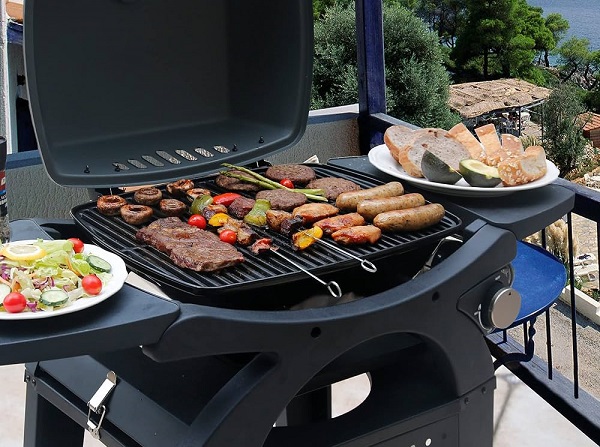Title: Mastering the Art: How to Cook on a Tabletop Gas Grill
Introduction:
In the realm of outdoor cooking, tabletop gas grills stand out as versatile, convenient, and user-friendly options. Whether you’re planning a camping trip, a picnic in the park, or simply want to enjoy the flavors of grilled cuisine in your backyard, a tabletop gas grill is your trusty companion. But if you’re new to the world of grilling or looking to refine your skills, fear not. In this guide, we’ll walk you through everything you need to know about how to cook on a tabletop gas grill like a pro.

Choosing the Right Grill:
Before diving into the cooking process, it’s essential to select the right tabletop gas grill for your needs. Consider factors such as size, portability, cooking surface, and fuel efficiency. Opt for a grill with durable construction, easy ignition system, and adjustable heat settings for precise control over the cooking process.
Preparation and Setup:
- Location: Place your tabletop gas grill on a stable, level surface away from any flammable materials or structures.
- Assembly: If your grill requires assembly, carefully follow the manufacturer’s instructions to ensure proper setup.
- Gas Connection: Connect the propane or butane gas cylinder to the grill according to the manufacturer’s guidelines, ensuring a secure fit.
- Preheat: Turn on the gas and ignite the grill. Allow it to preheat for 10-15 minutes with the lid closed to ensure even heat distribution across the cooking surface.
Essential Tools and Accessories:
To enhance your grilling experience, gather the following tools and accessories:
- Grill brush for cleaning the cooking grates
- Long-handled tongs and spatula for flipping and turning food
- Meat thermometer for checking internal temperatures
- Aluminum foil and drip pans for easy cleanup
- BBQ gloves to protect your hands from heat
Grilling Techniques:
- Direct Heat: For foods that cook quickly, such as burgers, steaks, and vegetables, use direct heat by placing them directly over the flames.
- Indirect Heat: For larger cuts of meat that require slower cooking, such as whole chickens or roasts, utilize indirect heat by turning off burners under the food and leaving others on.
- Lid Control: Keep the lid closed as much as possible to retain heat and smoke for optimal flavor infusion. Only open the lid when necessary to flip or check on the food.
Safety Tips:
- Never leave a lit grill unattended.
- Keep children and pets away from the grill while in use.
- Use long-handled utensils to avoid burns.
- Keep a fire extinguisher or water source nearby for emergencies.
- Allow the grill to cool completely before storing or transporting it.
Cleaning and Maintenance:
After each use, clean the grill thoroughly to prolong its lifespan and ensure safe cooking conditions. Scrub the cooking grates with a grill brush to remove any food residue, empty and clean the drip tray, and wipe down the exterior surfaces with a damp cloth. Regularly inspect the gas connections and components for signs of wear or damage, and replace any faulty parts promptly.
Conclusion:
With the right equipment, techniques, and safety measures in place, cooking on a tabletop gas grill can be a rewarding and enjoyable experience for novice and seasoned grillmasters alike. Experiment with different recipes, flavors, and cooking methods to unleash your culinary creativity and impress your family and friends with delicious grilled delights. So fire up your grill, savor the sizzle, and embark on a journey of culinary adventure one flame at a time!